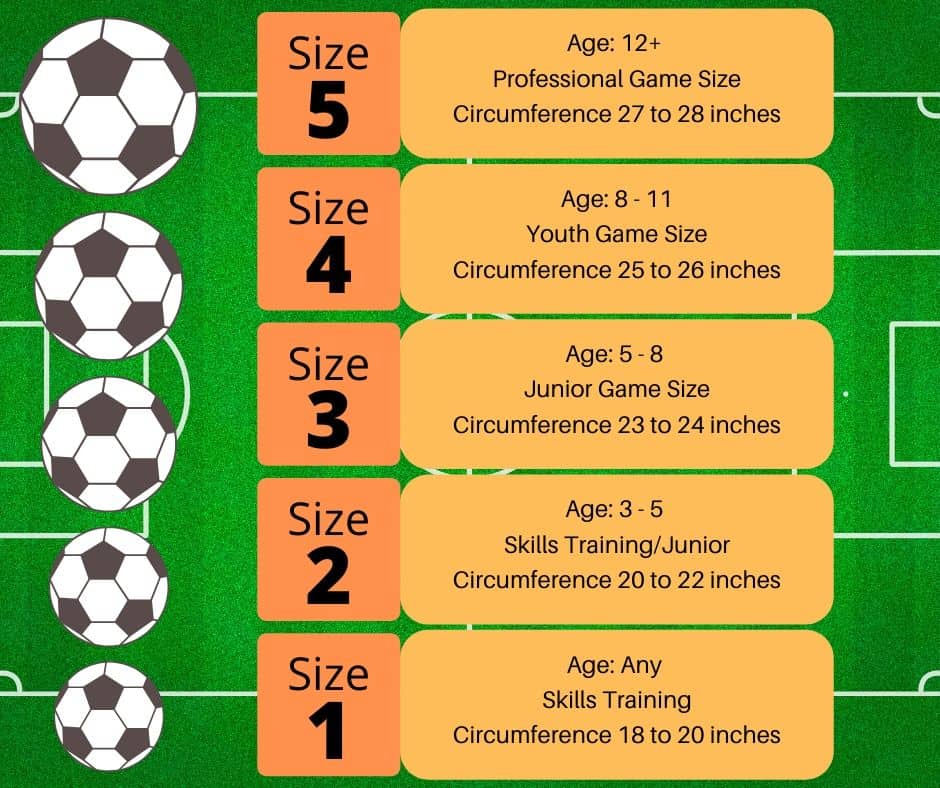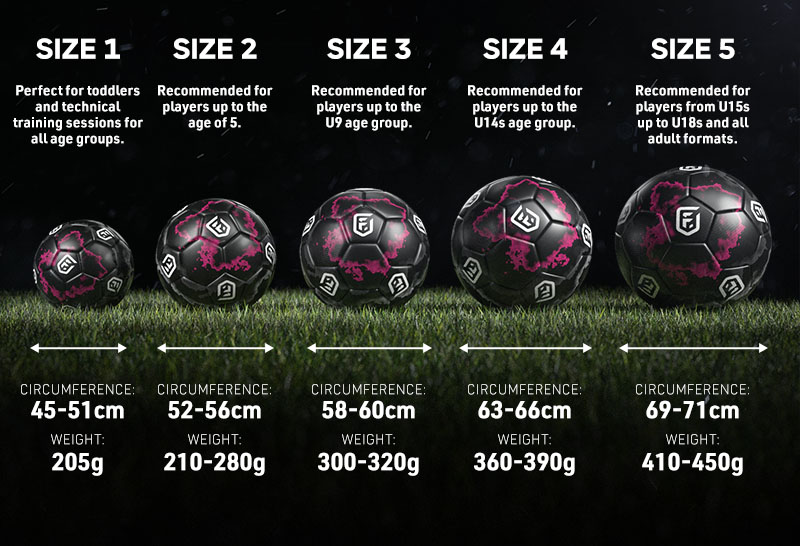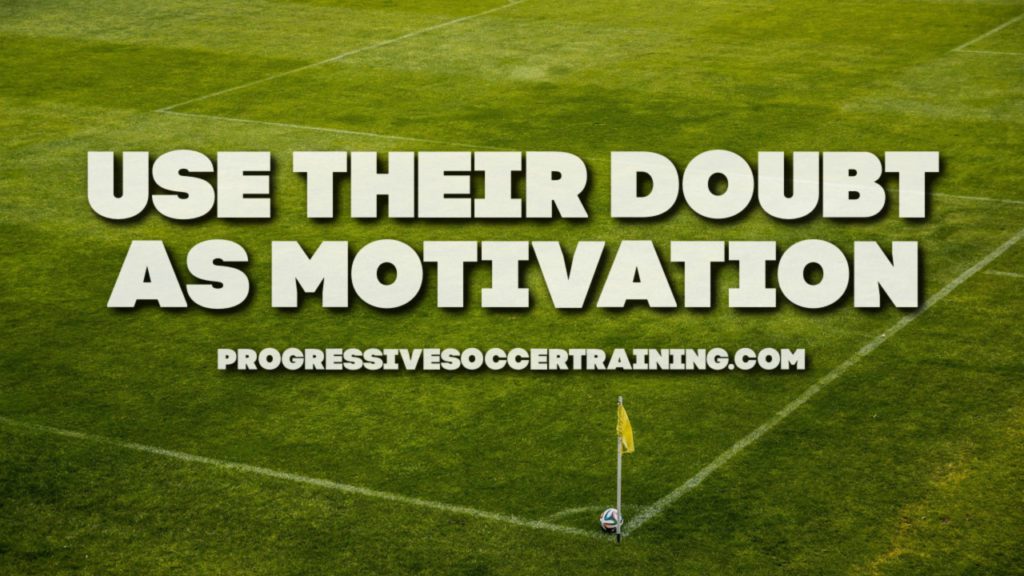Soccer Ball Sizes Per Age Group – Complete Guide (2025)
If you are looking for soccer ball sizes per age group – this is for you.
I want to talk to you about an essential aspect of your soccer training: choosing the right soccer ball size for your age group.
Whether you’re just starting out or already a seasoned player, using the correct ball size can make a huge difference in your skill development and overall performance on the field.
In this article, I’ll provide you with a handy chart that outlines soccer ball sizes by age and answer some common questions related to this topic. So let’s dive in and find the perfect ball for you!

Soccer Ball Size Per Age
In this article, you can read through all 5 sections or skip ahead to the topics that are most important to you. Make sure to watch the video tutorial to get the best results. And stick around until the end for a special free gift that is guaranteed to make you a better player.
- What size soccer ball for each age group?
- Soccer ball sizes by age chart?
- Should I practice soccer with different ball sizes?
- How to train for soccer with only a ball…
- How to take action, keep moving forward, and improve faster than most players!
I hope this article answers all your soccer specific questions. Let’s go!

What Size Soccer Ball for Each Age Group?
When it comes to soccer, using the right ball size is crucial for effective practice and skill enhancement. Here’s a breakdown of the recommended soccer ball sizes for each age group:
- Ages 3-5: Size 3 Soccer Ball
- Young players at this age are just beginning their soccer journey.
- A size 3 soccer ball is lightweight and easier to control, allowing them to develop their coordination and basic skills.
- Ages 6-9: Size 4 Soccer Ball
- As young players progress, it’s time to upgrade to a size 4 ball.
- This ball is slightly larger and heavier than a size 3 ball, encouraging players to refine their technique and improve their control.
- Ages 10 and up: Size 5 Soccer Ball
- At this stage, players transition to the standard size 5 soccer ball.
- Size 5 balls are used in most professional and competitive games.
- They provide a great balance of weight and size, allowing players to develop their power, accuracy, and overall game performance.

Soccer ball Sizes by Age Chart
To make it easier for you, here’s a handy chart that summarizes the soccer ball sizes by age group:
| Age Group | Recommended Ball Size |
|---|---|
| 3-5 | Size 3 |
| 6-9 | Size 4 |
| 10 and up | Size 5 |
And now into some more practical advice about using different sizes of soccer balls…

Should I Practice Soccer with Different Ball Sizes?
Absolutely! Incorporating different ball sizes into your training routine can bring a variety of benefits to your game. Here’s why you should consider practicing with different ball sizes:
- Enhanced Control and Technique: Using a smaller or larger ball challenges your control and technique in unique ways. It helps you develop better footwork, improve your touch, and adapt to different game situations.
- Improved Strength and Accuracy: Training with a larger ball can increase the power and accuracy of your shots and passes. It forces you to use more strength and precision, making the standard size 5 ball feel lighter and easier to handle during matches.
- Mental Adaptability: Practicing with different ball sizes improves your ability to quickly adjust to changing game conditions. It enhances your decision-making skills and boosts your confidence when playing with various ball sizes.
Remember, using different ball sizes is not just about mastering a specific size; it’s about broadening your skill set and becoming a well-rounded player. Embrace the challenge, embrace growth!

If you are finding this information about how to avoid injuries in soccer helpful…
Watch this video. You can become a better soccer player, improve faster, and achieve more in this sport. I’ve helped thousands of players all around transform their game and I’d love to help you do the same.
How to practice soccer with ONLY a ball
Soccer players, the right ball size can make all the difference in your journey to becoming a better player. By using the appropriate ball size for your age group, you’ll optimize your training sessions and develop the skills needed to excel on the field. Remember to refer to the soccer ball sizes.
Common Questions
Here are some common questions related to soccer ball sizes:
How do I know what size soccer ball to get?
Choosing the right size soccer ball depends on the player’s age and skill level:
- Size 3: Best for players under 8 years old.
- Size 4: Suitable for players aged 8 to 12.
- Size 5: Standard for players 13 years and older, including adults.
It’s essential to choose a ball that matches the player’s physical size and comfort level for control and handling.
What size is a FIFA soccer ball?
A FIFA soccer ball is typically a Size 5, which is the standard size for adult and professional soccer. This size has a circumference between 27 to 28 inches and weighs between 14 to 16 ounces. It’s used for official international matches, league games, and most adult soccer competitions.
Should I buy a size 4 or 5 soccer ball?
The choice between a size 4 or size 5 soccer ball depends on the age and skill level of the player:
- If you’re buying a ball for a player aged 8-12 years old, a Size 4 will be a better choice because it’s smaller, lighter, and easier to control at that age.
- For players aged 13 or older, or if the ball is for adult use, a Size 5 soccer ball is the standard choice for full-size play.
Who uses size 2 soccer balls?
A size 2 soccer ball is typically used for very young players or for footballs that focus on skills development for children under 6 years old. It’s also commonly used for skills training or as a novelty ball in promotional settings. Its smaller size and lighter weight make it easier for very young kids to handle and develop basic soccer skills.
What is the difference between size 1 and 2 soccer balls?
A Size 1 soccer ball, often called a mini ball, is much smaller than a size 2 ball, with a circumference of about 18 to 20 inches, making it a training tool used to practice ball control, footwork, and tricks. A Size 2 ball is a little larger, at a circumference of 20 to 22 inches, and is still considered for younger players or training, though it’s generally not used in standard matches.
What soccer ball size do pros use?
Professional soccer players use Size 5 soccer balls. This is the standard size for adult and competitive play. Size 5 is used in all professional leagues, including the FIFA World Cup and major international tournaments, because it’s the regulation size for official games and offers a balance of control and distance for skilled players.
What age do kids move up to size 5 soccer ball?
Kids generally move up to a Size 5 soccer ball around the age of 13 or once they are old enough to play full-sided 11v11 soccer. For younger players (ages 8 to 12), the ball size should be Size 4, as it’s easier to control and maneuver at this stage of development.
Does the size of a soccer ball matter?
Yes, the size of a soccer ball matters significantly because it affects a player’s ability to control and strike the ball. Using the right ball for the player’s age and skill level allows for better development of technique, passing, and shooting. A ball that’s too big or small for the player can lead to frustration and hinder progress in training and matches.

SOCCER PLAYERS
Want to become a better soccer player?
Watch this 3-minute video about discovering your true potential
Learn how to improve your skills, mindset, soccer IQ, and fitness—no matter your level. Start playing with confidence, earning respect, and impressing coaches today.
About Coach Dylan
I used to struggle with confidence in soccer, feeling slow, weak, and unmotivated. Coaches overlooked me, and friends made fun of my skills. At one point, I even quit.
But I decided to take control of my development. Through hard work, I transformed my game, earned league titles, awards, a college scholarship, and international caps.
Now, I share my lessons and help others improve through my YouTube channel (1/2 million subscribers), soccer coaching and personal training.

How To Play Soccer Better
Struggling to make progress in soccer or stay organized with your training?
The Soccer Success Planner will help you stay focused, motivated, and increase your chances of achieving your goals in soccer.
Success doesn’t happen accidentally. Use it to set clear goals, create a plan of action, and take control of your future. Learn more about the Soccer Success Planner.

How To Become A Better Soccer Player
Struggling to improve in soccer or unsure how to train effectively? Want to stand out and earn respect from teammates and coaches?
The Online Soccer Academy will get you better results in less time.
Thousands of players have already transformed their game in just 60 days. Learn more about how the online soccer academy.

Related Posts
Here are some related posts to help you gain more knowledge and helpful advice:
How to be successful in soccer
How to get MATCH FIT for soccer
Coach Dylan
Progressive Soccer
Thank you for reading this article:
Soccer Ball Sizes Per Age Group – Complete Guide (2025)
